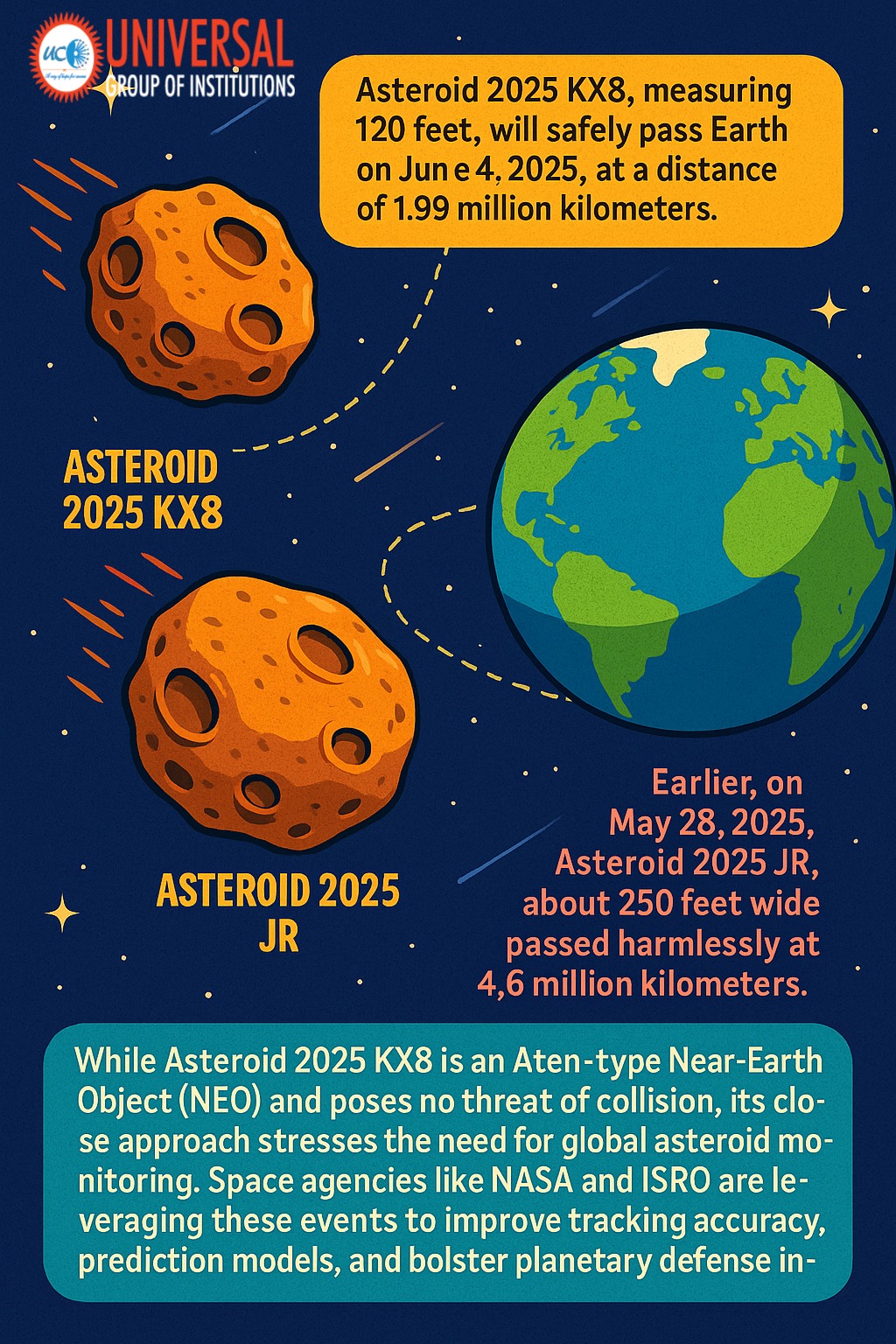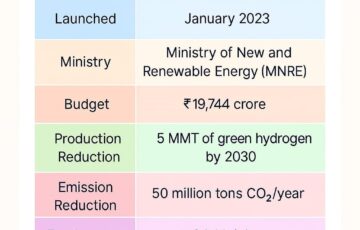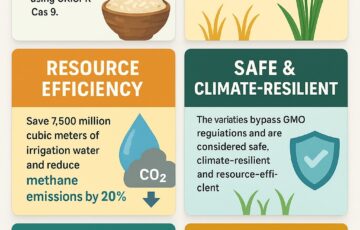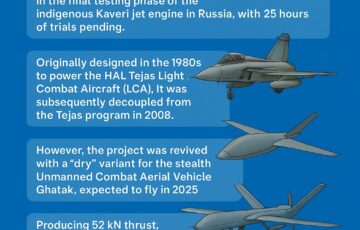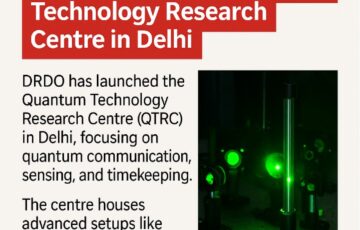How 2025 KX8 and 2025 JR Are Reminding Us Why Space Vigilance Matters
Two Near-Earth Asteroids, One Week: How 2025 KX8 and 2025 JR Are Reminding Us Why Space Vigilance Matters
The final days of May and the early days of June 2025 have brought spacewatchers an astronomical double feature. Two near-Earth asteroids—2025 JR and 2025 KX8—are making unusually close flybys of our planet, sparking global interest in space monitoring and planetary defense strategies. These events have prompted renewed focus on NASA’s asteroid missions and the critical work of the Planetary Defense Coordination Office. As we ponder what will happen to Earth in 2025 and beyond, including the possibility of when an asteroid will hit the Earth, these close encounters serve as a stark reminder of the importance of vigilance in monitoring our cosmic neighborhood.
Asteroid 2025 KX8: Close Approach on June 4, 2025
Asteroid 2025 KX8, a near-Earth asteroid about the size of a small business jet, measuring approximately 120 feet (36 meters) in diameter, is expected to fly past Earth on June 4, 2025. It will pass at a distance of about 1.99 million kilometers (or roughly 1.24 million miles)—about five times the distance to the Moon. While that might seem far, it’s considered relatively close in cosmic terms, prompting astronomers to create detailed asteroid drawings for visualization and tracking purposes.
KX8 is classified as an Aten-type near-Earth object (NEO), part of the Aten group of asteroids with orbits that bring them inside Earth’s path around the Sun. Although KX8 does not qualify as a “potentially hazardous asteroid” (which NASA defines as being over 150 meters wide and within 7.4 million kilometers of Earth), its orbit is being closely monitored by NASA’s NEO Observations Program. The possibility of an asteroid in the sky visible to the naked eye has captured public imagination, though KX8 will not be bright enough for such observations.
Importantly, there’s no danger of Earth impact, but astronomers are keeping a close eye on its trajectory for any unexpected shifts due to gravitational perturbations or solar radiation effects. The near pass offers a valuable opportunity for asteroid detection efforts and to study asteroid behavior, helping to refine tracking models used by the Minor Planet Center and other facilities conducting astronomical observations.
Asteroid 2025 JR: Passed by on May 28, 2025
Just a few days earlier, on May 28, 2025, Asteroid 2025 JR—a much larger near-Earth asteroid—made its close approach. Estimated to be around 250 feet (76 meters) in diameter, it passed Earth at a distance of 4.6 million kilometers (approximately 2.87 million miles). This flyby, along with other recent near misses like asteroid 2024 YR4, underscores the dynamic nature of our solar system and raises questions about when an asteroid will hit the Earth.
JR belongs to the Apollo-class of NEOs, known for their Earth-crossing orbits. Hurtling through space at a speed of 40,800 km/h (25,350 mph), this asteroid might have passed quietly, but it commanded attention due to its size. An asteroid of this magnitude, if on a collision course, could pose a significant asteroid impact risk and potentially disrupt life inside our Earth, causing regional-level devastation.
Historical events like the Tunguska explosion of 1908—where an object estimated to be around 50-60 meters in size flattened over 2,000 square kilometers of Siberian forest—serve as reminders of the real risks posed by NEOs of this scale. Such events underscore the importance of ongoing asteroid NASA missions and the need for robust impact hazard assessment protocols. The question of what will happen to Earth in 2025 and beyond remains a concern for scientists and the public alike.
Global Preparedness: NASA and ISRO Lead the Charge
Organizations like NASA and ISRO (Indian Space Research Organisation) are taking planetary defense seriously. NASA has a comprehensive Asteroid Watch program and missions like DART (Double Asteroid Redirection Test) that are designed to test asteroid deflection technologies. The agency’s Planetary Defense Coordination Office coordinates these efforts, working to detect, track, and characterize potentially hazardous NEOs. This coordination team plays a crucial role in maintaining global vigilance against cosmic threats and predicting when an asteroid will hit the Earth.
NASA asteroid news often highlights the importance of early detection and tracking. The agency’s upcoming NEO Surveyor mission, with its defender launch date set for the near future, will enhance our ability to detect and track near-Earth objects, including those as small as 1 kilometer in diameter. This mission is part of a broader NEO global strategy to protect our planet and understand what will happen to Earth in 2025 and beyond.
Meanwhile, ISRO is stepping up its own asteroid monitoring efforts. The Indian agency is reportedly planning future missions to study NEOs and even develop asteroid landing technologies to simulate possible defense mechanisms. Collaboration with international space agencies is at the heart of ISRO’s planetary defense roadmap, emphasizing the importance of global collaboration in addressing potential asteroid threats and Earth impact scenarios.
Why These Flybys Matter
Neither asteroid posed a threat this time, but their flybys serve as stark reminders: our solar system is dynamic, and Earth is not immune to asteroid encounters. The study of asteroids like Bennu, which has been the focus of a recent NASA asteroid mission, provides valuable insights into the composition and behavior of these celestial bodies. Asteroid Bennu, in particular, has helped scientists understand the potential for asteroid impact and how these objects interact with Earth’s atmosphere.
Even a small miscalculation in an asteroid’s trajectory—or a slight push from gravitational forces leading to an orbital change—can potentially alter the outcome of future flybys. That’s why early detection, precise tracking, and international cooperation are essential in preparing for long-term planetary defense. The Pentagon space program also plays a role in this effort, collaborating with NASA and other agencies to enhance our defensive capabilities and predict when an asteroid will hit the Earth.
As we continue to explore and understand near-Earth objects, it’s clear that our efforts to monitor and potentially deflect these cosmic visitors are more crucial than ever. The work of organizations like the Minor Planet Center, combined with advanced asteroid detection technologies and global collaboration, forms our best defense against potential asteroid impacts. While we may not know exactly what will happen to Earth in 2025 or when an asteroid will hit the Earth, our increasing vigilance and preparedness ensure that we’re better equipped than ever to face this cosmic challenge and protect life inside our Earth.
Watch Related Video : https://www.youtube.com/shorts/MZleX-9CMdk

